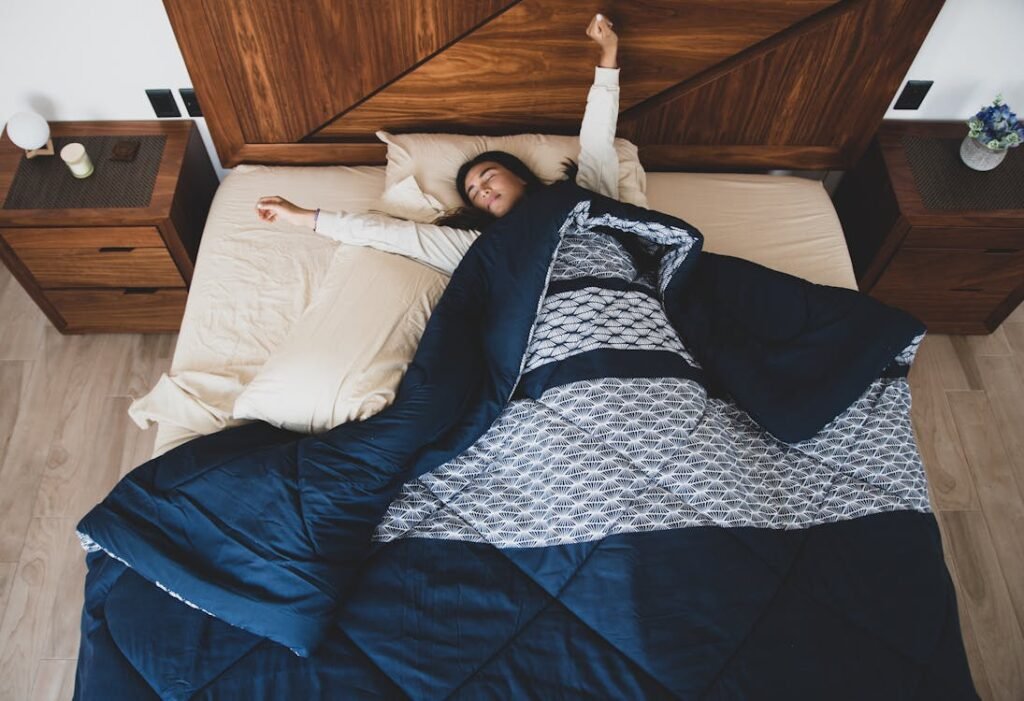Introduction To Good Mattress for Health:
Another good reason why one should invest is in a good Mattress is for Health.
The potential of a mattress isn’t simply to bunk; it happens to be one of the soundest expenditures possible. The right mattress places your body in correct posture, and has balanced your weight around your spine. This is because one is able to prevent pressure that is likely to produce pain and interferes with sleep and leads to chronic pain. Also, using a mattress that meets your needs can actually ease some health problems like backache, neck, or even seasonal allergies.
All the considerations that people have to make before deciding on the right mattress to buy.

1. Firmness Level
The following is a clear depiction of how firm you need your mattress to be, to give you wonderful support; Mattresses typically come in three firmness levels: Firmness ranges have been identified to be in three classifications of mattress firmness.
Soft: Side sleepers are inevitably going to benefit from this mattress because it correctly conforms to the curvature of the shoulders and hips.
Medium: All round firmness with adequate contour for any position of the sleeper.
Firm: Recommended for people who sleep on their back and stomach, because they require additional support on their lower back area. The idea here is to get the right level of firmness that will allow the spine to be properly aligned while at the same time avoiding areas that cause undue pressure.
2. Material Composition
Mattresses are made from various materials, each offering different benefits: The materials used in the making of the mattresses are explained below as follows:
Memory Foam: Memory foam equally has a conformity-enhancing characteristic that mainly works by adapting to the shape of the body and minimizing pressure. That is perfect for individuals experiencing joint pain or people who lay on their sides most of the time.
Innerspring: Conventional mattresses use springs, although many post-innerspring designs are available today. They are denser than foam and offer excellent air circulation, making them a preferred choice for back and stomach sleepers.
3. Sleeping Position
Your sleeping position should influence your mattress choice. If you prefer a certain way to sleep then go for a mattress that supports that manner of sleeping.
Side Sleepers: However, there are some mattresses that one cannot classify as firm in order to have the ability to raise the shoulder and the hip.
Back Sleepers: Have a mattress with a firm to medium firmness with the proper contouring to align the spine in its proper position.
Stomach Sleepers: To cease the concave curve of the lower back being molded a firm type of mattress is required.
4. Body Weight
Your body weight affects how much pressure you put on the mattress, which in turn influences the level of support you need: Again, your body weight determines the pressure that you exert on the mattresses and therefore the intensity of support required.
Lightweight Sleepers (less than 130 lbs): may go for what they consider a less soft sleep surface in order to be in a better position to hug the mattress.
Average Weight Sleepers (130-230 lbs): Many a time prefer medium-firm mattresses.
Heavyweight Sleepers (over 230 lbs): Everyone should use a firmer mattress that is able to offer the necessary support so that sinking is not experienced.
5. Health Considerations
Certain health conditions may require specific mattress features: Certain health conditions may require specific mattress features:
Back Pain: It is considered that people with back pain should sleep on a medium-firm surface of the mattress which helps the spine be aligned and supported adequately.
Joint Pain: This could be gotten from a memory foam or a latex mattress which would offer the kind of support necessary to offer some measure of protection on the joints.
Allergies: Idealistic materials such as natural Latex or a mattress with dust mite-resistant cover are useful for the allergic person.
Types of Mattresses: Motion or Emotion: Which Mattress Is Good For Health?

1. Memory Foam Mattresses
Memory foam mattresses are special for their characteristic such as conforming to the body shape and offering support along with other forms of pressure. However, they are prone to heat and therefore might be uncomfortable for those sleepers who do not have special controls for cooling systems.
2. Innerspring Mattresses
Innerspring also performs much better in the ventilation aspect when compared to memory foam and hence will not cause you to sleep hot. However, they don’t provide the same level of pressure relief as others, making them less suitable for side sleepers or people with joint pains.
3. Latex Mattresses
It is worth underlining that latex mattresses need a little time to adapt for the sleeper and, nevertheless, they are very durable and suitable for everybody. They provide a very elastic surface and have a high value to maintain the health of the spinal column so it is perfect for people suffering from back pain. Latex is also free from allergens and also resistant to mold and dust mites, which would be good for allergic persons. Also, it does not suffer from the heat-trapping disadvantage that is characteristic of memory foam mattresses.
4. Hybrid Mattress
They are derived from innerspring coils but also have one or multiple layers of memory foam or latex. They provide the support of an innerspring mattress together with comfort plus pressure-relieving aspects of memory foam or latex. This makes them suitable to be used in any type of sleeping hence can be preferred by anyone. I especially recommend hybrids for those pairs who have various sleeping preferences – for her, it will be softer, and for him, firmer.
5. Adjustable Air Mattress
Later types of air mattresses allow users to manually adjust the firmness by regulating the air level inside the bed. This can be especially useful for people who have different firmness levels in the mattress that they prefer. Further, adjustable air mattresses will be useful provided you have back problems in that you can easily change the firmness of the mattress. Although they’re quite effective they can be more costly and perhaps might need constant monitoring so as to maintain the air levels good.
How did they develop and how can you choose the best mattress that will be beneficial to your health?

1. Consider Your Sleep Needs
Take into consideration the particular requirements concerning your health and your ideas on sleep. For example, if you have a problem with your back, then you will require a stiffer mattress. There are specific labels you can consider such as the hypoallergenic products for people with allergies. If you are sensitive to heat you may opt for a mattress that has the features of a heat sink.
2. Test Before You Buy
If possible one should try the mattress before actually buying one which is usually the case with other bedding products. Sit or lie in your usual sleep position and feel what it is like. If you plan on making a purchase through the internet then ensure that the company provides a period of trial to ensure you return it in case it does not suit you.
3. Read Reviews
The use of customers’ experience can be of great importance regarding the comfort level, durability, and efficiency of the mattress. This type of feedback is good, but for a more direct idea, try to find out how it is for other sleep preferences or health conditions that you have.
4. Warranty and Return Policy is another consideration that you have to take into account
Warranty and return policy are some of the requirements that anyone should consider when purchasing a mattress. We have postulated that warranty which is long lasting can enable the buyers gain confidence while liberal return policy means that one can bring back the mattress since it does not suit her or him.
Conclusion
When choosing a mattress one must be very attentive because the decision made influences your health in a very significant way. At other times, you require added support for your back, freedom from allergy prone periods, or just a good night’s sleep, and a proper mattress does help a lot. If you change your sleeping position or weight or health status, then getting a healthy as well as comfortable mattress assures your comfort.
FAQs
1. How often one should replace a mattress?
Their durability is usually from 7-10 years however, it depends on the type and quality of the mattress. Indications that it is time to get a new mattress include; they are old, they have sagged, or bumping.
2. Does a mattress have the possibility to mitigate this type of pain?
Yes, having a mattress that provides correct support and positioning decreases back discomfort. Back pain sufferers are particularly advised to use a medium-firm type of mattress.
3. Which is healthier for health, memory foam or innerspring?
It literally depends on the need required to be fulfilled. Memory foam causes less body impression so it is good for joint pains, whereas, innerspring provides better support to the back and stomach sleepers due to its firmness.
